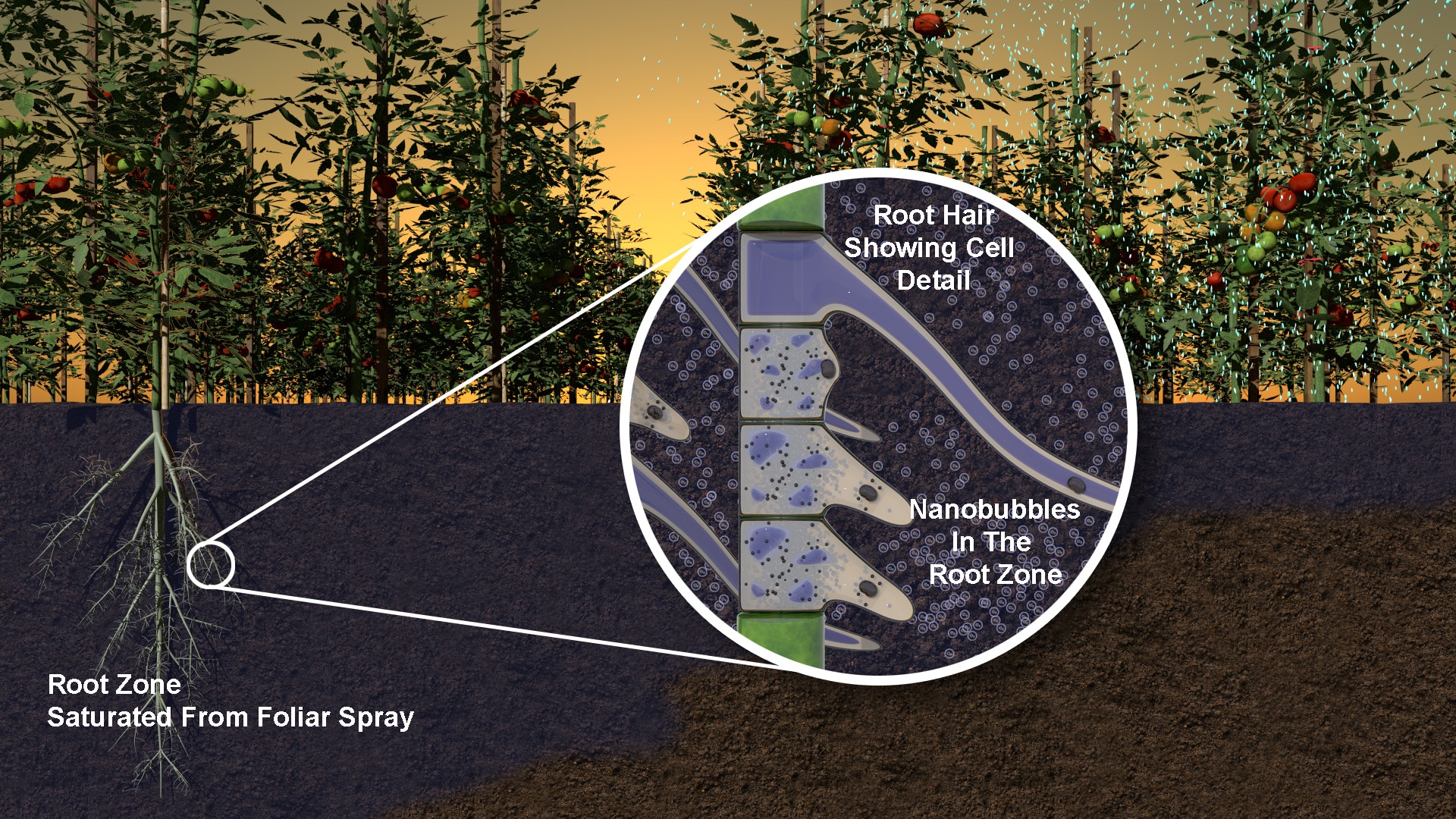
The Role Of Nanobubbles In Fertilizer Technology

Nanobubble fertilizer is a type of fertilizer that contains tiny bubbles of air or gas, known as nanobubbles. These bubbles are typically smaller than 100 nanometers in size, which is about 1,000 times smaller than the width of a human hair.
Summit Nutrients technology utilizing an oxygen infused nanobubble process not only improves the physical properties of fertilizer materials, but has an accelerating effect on the metabolism of plants.
The nanobubbles are created by a process utilizing a highly efficient gas-to-liquid injection technology that converts bulk oxygen into nanobubbles and supersaturates water with high levels of dissolved oxygen. The results include reducing the surface tension, improving wettability and infiltration and reduced turbidity (cloudiness) of the liquid fertilizer.
Nanobubble fertilizer is more effective than traditional liquid fertilizers because the nanobubbles have a larger surface area than larger bubbles, which allows them to deliver more oxygen and nutrients to plant roots.
The formulations enable an oxygen-rich root zone which increases plant metabolic rate and energy production. The dissolved oxygen in SPT fertilizers also provides much needed oxygen for plant roots and the microbial population.
Additionally, the nanobubbles can remain in the soil for longer periods of time, which means that the nutrients are released more slowly and are available to the plants over a longer period of time. This can help to reduce the amount of fertilizer needed and improve plant growth and health.

